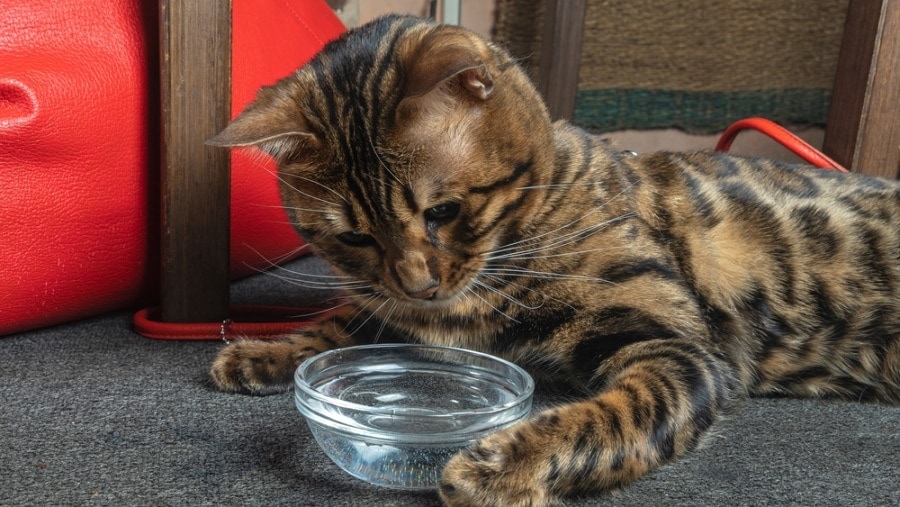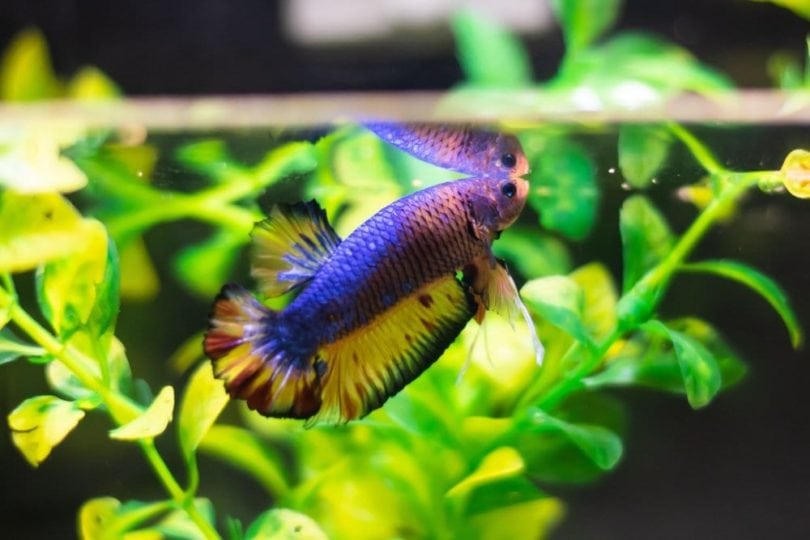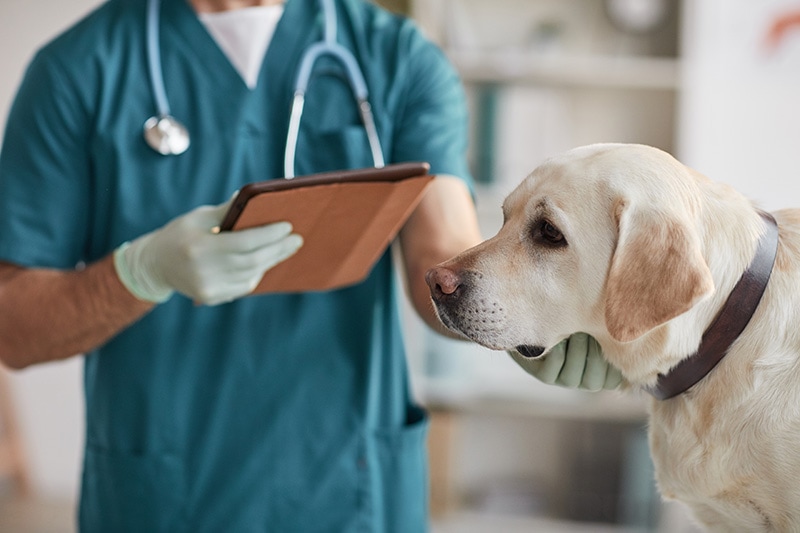Can Dogs Suffer Neurosis? Exploring Anxiety and Compulsive Behaviors in Dogs (Vet Answer)

Updated on
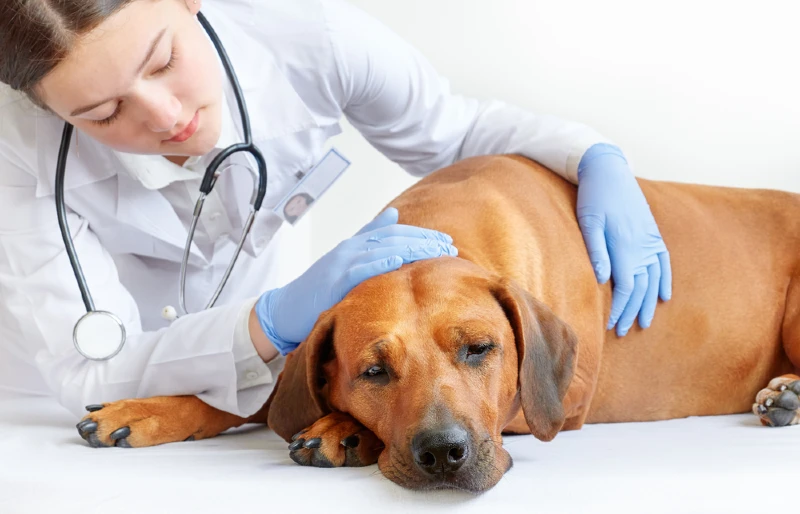
The term “neurosis” can conjure up a lot of different definitions. In common terms, it is often used to describe a more general sense of anxiety and related conditions. These complex emotions and behaviors can bring about extreme stress with a significant decrease in quality of life both for the dog and their owner.
Can dogs really suffer from neurosis? Absolutely! In fact, you might be surprised to know that just like people, dogs can have a clinical diagnosis of anxiety, compulsive disorder, and the like. So, what does this mean and what can we do to help our furry friends? Read on as we delve more into this world.
Some Definitions of Behavioral Terms
In veterinary medicine, behavior1 is considered a significant component of the overall health and well-being of an animal. In fact, there are veterinarians, called veterinary behaviorists, who spend years after veterinary school furthering their education, training, and experience in the single area of veterinary medicine known as “animal behavior.” In this world, veterinarians use an entire vocabulary dedicated to this area of study, and one of the best ways to get started in understanding animal behavior, is to learn the lingo.
Many terms are often lumped together, but we’ll tease out what some of these means specifically.
- A fear is an emotion that affects the mind and the body in response to what a dog perceives as a dangerous stimulus that makes the animal want to change or avoid the situation. A fear can be a normal or an abnormal behavior given the context.
- A stimulus itself could be a person, a sound, a situation, or an object.
- A phobia is an extremely excessive and illogical fear of a stimulus resulting in a negative reaction.
- Anxiety, then, is a reaction that can affect the mind and body of the dog that can be in anticipation of a future perceived danger (stimuli) or as a memory of a past one.
- Compulsive behaviors, or obsessive-compulsive disorder (OCD), is where a behavior is repeated over and over on an ongoing and long-term basis. This can include behaviors that would be expected normally but are done with an unexpectedly high frequency, in an unusual manner, or done without a need or purpose.
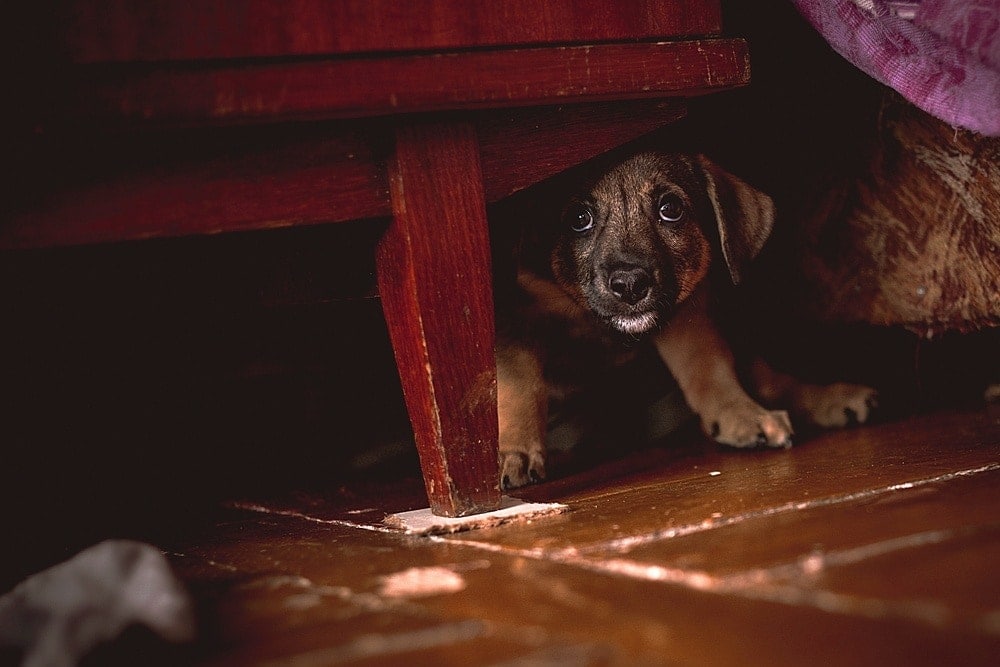
Anxiety In Dogs
As described above, anxiety in dogs includes a reaction that causes the individual distress around specific stimuli. It can be about a past memory or in anticipation of the future, and the specific cause or stimuli does not necessarily need to be present to bring about the apprehension. One example that is rather commonly expressed in dogs is separation anxiety.
The various causes of anxiety can be multifaceted and complex. Genetics may play a role in cases, but incorrect socialization, life experiences, trauma, significant changes, or other medical issues such as pain or cognitive dysfunction could also be partially to blame. Fears, phobias, or anxieties can and do occur at any age.
- Increased breathing and heart rate
- Urinating or defecating inside the house
- Restlessness
- Pacing
- Destructive behavior
- Excess salivation or vocalization
- Trying to escape
- Self-injurious behavior
- Compulsive behaviors (see below)
Compulsion In Dogs
Compulsion in dogs, as defined above, is where a dog has repetitive behaviors or movements that are done out of context or without a function; think of it as a non-helpful or pertinent behavior on repeat! The behavior may even be typical for a dog but is done to an abnormal degree. An example of this might be over-grooming a particular area obsessively, so much so, that they cause damage to their body (an acral lick granuloma).
It has been found that when compulsive behavior is present, there are changes in the neurotransmitters of the animal, most notably serotonin but dopamine as well. It is suspected that genetics may play a role in this condition as some breeds are more likely to commit specific compulsions. Typically, these behaviors manifest somewhere from 6 months to 2 years of age.
- Locomotor behaviors such as spinning, chasing the tail, running the fence, chasing light or shadows
- Oral behaviors such as licking, sucking objects or body parts (such as a flank, limb, or tail), and pica (eating non-food items that are not appropriate)
- Hallucinatory behaviors such as fly biting (biting at imaginary things), staring into space, or checking the hind end.
- German Shepherds: Spinning and chasing their tails
- Dobermans: Flank sucking
- Miniature Schnauzers: Checking their hind end
- Border Collies: Chasing light and shadows
- Great Danes: Oral behaviors (ex: acral lick granuloma)
One important note is if the compulsive behavior exhibited is not causing a detriment to the health of the dog or negatively implicating the animal-human bond, treatment for compulsive behaviors may not be necessary.
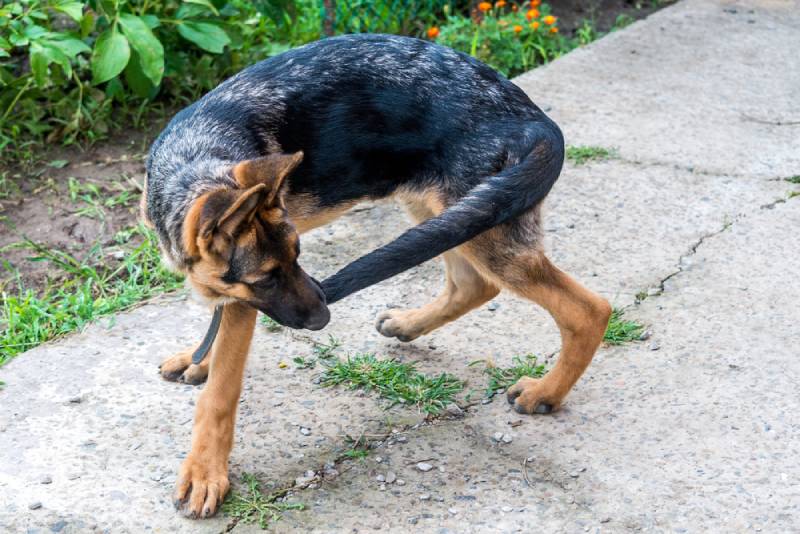
Diagnosis
For a diagnosis of either anxiety or compulsive behaviors, a veterinarian will do a complete physical exam and want to obtain a fairly detailed history. They will likely have numerous things to ask regarding the behaviors in question, and videos of the pet displaying the behavior(s) can be very helpful. Depending on what is found with these initial steps, further testing may be warranted. At a minimum, baseline bloodwork and urine samples will likely be obtained.
These tests can help to see if there could be some underlying medical issue and also function as a baseline for any potential behavior drugs that may be given.
Treatment
Caveat: It should be noted that while some veterinarians work with or may specialize in animal behavior, others may not be as comfortable dealing with such cases. Depending on the particular complexity and severity of the case, as well as both the comfort level and experience of the veterinarian, a dog could be referred initially, or further along during care, to a veterinary behavior specialist. In addition, the veterinarian may want to enlist other additional qualified professionals, such as a certified trainer who uses preferable techniques, as part of the treatment plan.
First, any underlying medical health issue present should be treated appropriately. In addition, there will likely be lots of education for the dog owner to absorb and implement as well as making safety for the dog, owner, and others of the utmost importance. For example, if a dog displays aggression in response to anxiety on a walk, working the dog up to being able to wear a basket muzzle on a walk may be a safe, good option.
For the specific treatment of anxiety or OCD-type behaviors, it is important to know that for the best chance of improvement or resolution, several methods are combined- behavior modification, environmental modification, and potential medications.
- Behavior modification is based on some key principles. First, punishment (such as a shock collar, physical hitting, or yelling) is counterproductive. Teaching coping skills while avoiding the stimulus for a time, implementing structured interactions (such as a “sit” before any interaction from the owner), and distractions while redirecting can all be much more beneficial. Next, desensitization (slowly working to increase exposure to the stimuli) and counterconditioning (encouraging an environment with good things that are rewarding such as treats, toys, or attention) would be implemented.
- Environmental modification is useful to decrease stress and anxiety in the affected animal’s environment. This may include taking away or reducing triggers (when not actively working on behavior modification) if possible. Additional factors such as having a safe space for the dog as well as creating enriching surroundings are key. Other important components include having (or increasing) physical activity as well as mental stimulation can be very helpful. Mental stimulation for a dog could include changing out toys or using feeding puzzles. Another fun element might be doggy daycare or having positive play interactions with other safe people or dogs. A synthetic pheromone known as dog-appeasing pheromone (DAP), mimics natural pheromones secreted by a dog’s mother shortly after birth. DAP may help produce a calming effect that reduces anxiety and fear; it exists in various options such as sprays, collars, or wall plug-ins.
- Medications should be used in combination with the above behavioral and environmental changes for optimal overall results. As each dog is an individual, veterinarians may weigh several factors when choosing a specific medication (or medications). They may consider whether the behaviors are situational or generalized, the severity of the behaviors, other health conditions, response to other medications, etc. Some examples of situational anxiety medication (eg: given in the case of grooming, fireworks, etc.) which would be given typically 30–90 minutes before the event might include trazodone or alprazolam. More generalized anxiety or compulsive behavior medications for daily use may include selective serotonin reuptake inhibitors (SSRIs) such as sertraline or fluoxetine or may include tricyclic antidepressants (TCA) such as clomipramine. Some types of longer-use behavioral medications may take several weeks to months to take effect. In general, many of these behavioral medications are extra-label (using a drug for another use than what it is labeled for) and therefore, it is very important to administer the medication as indicated by your veterinarian and to alert them promptly of any side effects.
Prognosis
The overall prognosis for behavioral disorders like anxiety and compulsive behaviors is better when addressed with a multifactorial response. With hard work from the veterinary/behavioral expert, the dog owner, and the dog, management or even resolution of signs can often be achieved. If ignored, the behavior(s) are likely to remain or get worse over time and can have a poor prognosis in regard to quality of life.
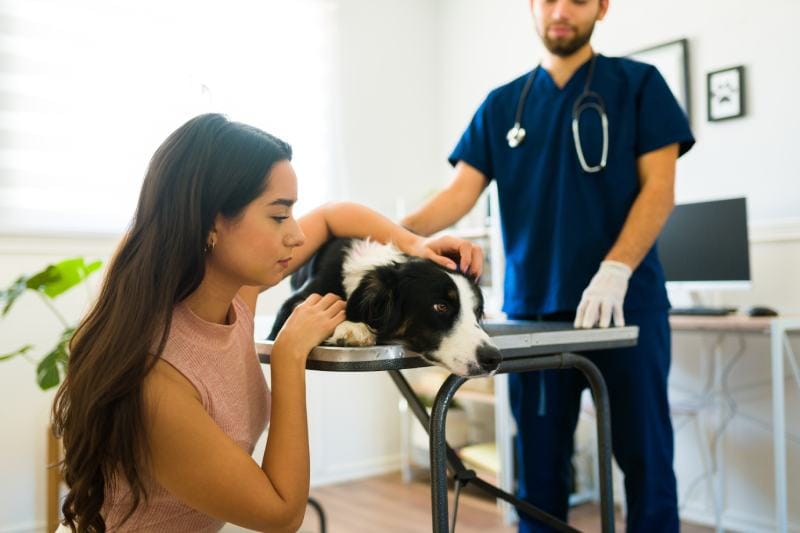
Conclusion
Just like people, dogs can suffer from anxiety, compulsion, and related fears and behaviors. As their caregivers, we often want our pets to have the happiest and healthiest life possible, including alleviating any negative behavioral disorders. It is encouraging to know that there are many treatment options available and that veterinarians and animal behaviorists are there to help us through this process.
Featured Image Credit: Zontica, Shutterstock



